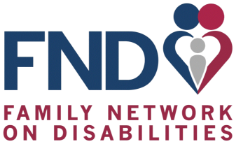INformation Hub
Training Curriculum on Part B of IDEA 2004
Training Curriculum on Part B of IDEA 2004
Building the Legacy | Construyendo el Legado
Updated, 2020
 The Building the Legacy / Construyendo el Legado training curriculum is intended to help all those involved with children with disabilities understand and implement Part B of IDEA 2004, the nation’s special education law. The curriculum is organized according to five themes central to IDEA, with multiple training modules beneath each theme. The five themes are:
The Building the Legacy / Construyendo el Legado training curriculum is intended to help all those involved with children with disabilities understand and implement Part B of IDEA 2004, the nation’s special education law. The curriculum is organized according to five themes central to IDEA, with multiple training modules beneath each theme. The five themes are:
- A | Welcome to IDEA
- B | IDEA and General Education
- C | Evaluating Children for Disability
- D | The Individualized Education Program (IEP)
- E | Procedural Safeguards under IDEA 2004
Each individual module within each of these themes includes:
- a slideshow for trainers to use;
- a Trainer’s Guide explaining how the slides work as well as the content of the slides; and
- handouts for participants (available in English and in Spanish).
Building the Legacy/Construyendo el Legado was produced by NICHCY at the request of the Office of Special Education Programs (OSEP) at the U.S. Department of Education.
______________________________
Construyendo el Legado | The Training Curriculum in Spanish
All handouts for participants are available in both Spanish and English. Slideshows for the following modules are, too: 1 (Top 10 basics), 6 (on EIS and RTI), 9 and 10 (on evaluation), 12-14 (on the IEP), and 17 (on procedural safeguards). This means that, even if the slideshow and Trainer’s Guide for a module are available only in English, trainers will have Spanish-language handouts that they can share with Spanish-speaking audience members, as need be.
_____________________________
The list below identifies the five central themes of Building the Legacy / Construyendo el Legado (indeed, of IDEA itself!) and the individual training modules under each. Modules available in English and Spanish are marked with a two asterisks in red (**).
Follow the links below to the modules and materials of your choice! That includes the Spanish materials, too (just follow the **).
___________________________________
Theme A: Welcome to IDEA | ¡Bienvenido a IDEA!
Take a broad look at IDEA 2004 with these 2 modules–the first welcomes newcomers to IDEA and the second identifies what’s different in the 2004 reauthorization of the law.
- Module 1 | Top 10 Basics of Special Education (**)
- Module 2 | Key Changes in the Law and Regulations
Theme B: IDEA and General Education | IDEA y la Educación General
See how IDEA aligns with the Elementary & Secondary Education Act ( ESEA was reauthorized as the No Child Left Behind in 2002) and explore topics on general education and children with disabilities. 2016 Editor’s note: The Elementary & Secondary Education Act was reauthorized as the Every Student Succeeds Act in December 2015, bringing changes to IDEA itself. Also in 2016 the U.S. Department of Education significantly revised the law’s regulations regarding disproportionality in special education.
- Module 5 | Disproportionality in Special Education | 2020 version is here!
- Module 6 | Early Intervening Services and Response to Intervention (**)
- Module 8 | NIMAS
Theme C: Evaluating Children for Disability | Las Evaluaciones Bajo IDEA
When children are struggling in school, the possibility exists that they may have a disability. The 3 modules in Theme C look at the evaluation process under IDEA, which is intended to determine if, indeed, there is a disability affecting a child’s school progress and, if so, whether the child needs special education and related services.
- Module 9 | Introduction to Evaluation (**)
- Module 10 | Initial Evaluation and Reevaluation (**)
- Module 11 | Identification of Children with Specific Learning Disabilities
Theme D: Individualized Education Programs (IEPs) | Los Programas Educativos Individualizados
The IEP is the cornerstone in the education of every child with a disability. Learn about everything IEP and more!
- Module 12 | The IEP Team: Who is a Member? (**)
- Module 13 | Content of the IEP (**)
- Module 14 | Meetings of the IEP Team
- Module 15 | LRE Decision Making
- Module 16 | Children Enrolled by Their Parents in Private Schools
Theme E: Procedural Safeguards | Las Garantías Procesales
Prior written notice, informed written consent, access to records, just a few of the critical safeguards in IDEA for families and schools.
- Module 17 | Introduction to Procedural Safeguards (**)
- Module 18 | Options for Dispute Resolution
- Module 19 | IDEA’s Discipline Provisions
Need an Index?
Obviously, Building the Legacy covers a spectrum of topics related to special education, disability, and IDEA itself. If you’re wishing for an index to what topic is discussed where, we are pleased to provide one! (English only)
https://www.parentcenterhub.org/wp-content/uploads/repo_items/legacy/Index.doc
SOURCE ARTICLE: Center for Parent Information & Resources
Give us a call at (727) 523-1130 or (800) 825-5736 or request a callback by clicking below.
311 South Missouri Ave, Clearwater, FL 33756
(727) 523-1130
(800) 825-5736

